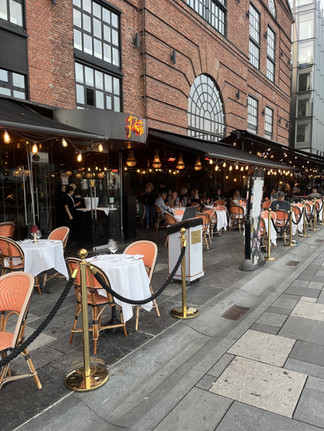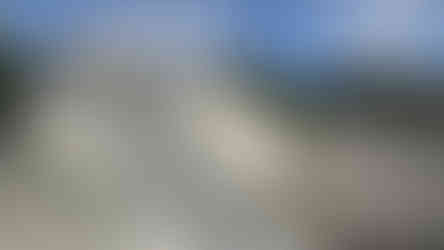What to visit in Oslo? 15 essentials
- ivetberdie

- Aug 25, 2024
- 11 min read
COMPLETE GUIDE TO DISCOVER THE NORWEGIAN CAPITAL
If you are planning a visit to Oslo, you have come to the right place! I have been lucky enough to travel to this vibrant capital on several occasions and it never ceases to fascinate me. From its rich history and culture to its stunning natural landscapes, Oslo always has something for everyone.
In this guide, I will show you 15 essential places that you cannot miss and some other practical information that I hope will be helpful to you. Get ready to learn about the most emblematic corners and discover what makes Oslo such a special city. Let's go!

First... some useful information
Before diving into the adventure of exploring Oslo, it is important to know some of its peculiarities:
Oslo is Norway's capital and largest city, a country known for its stunning nature and high quality of life.
Here the official language is Norwegian, however don't worry if you don't speak it as most locals speak English very well.
The currency used is the Norwegian Krone (NOK) since Norway is not part of the European Union (but is part of the Schengen area). However, card payments are accepted almost everywhere.
One of the most fascinating things about Oslo is how the light changes throughout the year. Winters have very short days with barely any hours of light, while in summer the sun almost never sets and there is no darkness.
Winters are cold and snowy, with temperatures well below 0ºC (somewhat extreme if you are not used to it), while summers are mild and very pleasant, with temperatures around 20-25°C.
Now, let's see those 15 essential places! :)
1. Central Station
The central station will probably be the first thing you see when you arrive in Oslo. Also known as Oslo.S, is the epicenter of the city where everyone mixes: from locals in a hurry to clueless tourists with maps in hand.
Just as you leave the Central Station, you come across Jernbanetorget Square, where the first thing that catches your eye is the Clock Tower and the famous tiger sculpture that has become a symbol of Oslo itself. In the distance you can also see the start of the city's main shopping street, Karl Johans Gate, and the impressive Oslo Opera House.

¿How to get to the center of Oslo from the airport by train?
The fastest way to get to the center of Oslo from the airport is by train. For both existing options, you can purchase tickets easily at the airport machines or through their respective apps:
Flytoget: this is the express train that connects the city with the airport. The duration of the journey is 20 minutes and it has a frequency of 10 minutes. The ticket is free for minors, NOK 100 (€9) for students and NOK 240 (€20) for adults. In this link you will find all the information. It is important to keep in mind that this ticket is exclusive for the express train, it does not include a transfer upon arrival in Oslo.
Regional train: the journey time is 25 minutes (only five minutes longer than the Flytoget express train), however its frequency is lower, approximately every 30 minutes. There are several lines that cover the route: RE11, RE10 and R2. The price is NOK 48 (€4) for children and youth, and NOK 124 (€10.50) for adults. In this link you will find all the information and timetables. The best thing is that the ticket for these trains includes a transfer to use trams, buses or subways once you arrive in Oslo.
2. Norwegian Opera and Ballet
The Oslo Opera House is a place that leaves you speechless from the first glance. Its modern and elegant design makes it look more like a work of art than a building. The best thing is that you can walk along its sloping roof and enjoy a spectacular view of the Oslo Fjord and the city skyline, especially during sunsets.
It was inaugurated in 2008 and was designed by the Norwegian architecture studio Snøhetta, author of other projects such as the Norwegian embassy in Berlin and the Bibliotheca Alexandrina in Egypt. The building won the World Architecture Festival in Barcelona in 2008 and the European Union Contemporary Architecture Prize in 2009. It has capacity for 1,364 spectators and the main stage is 16m below sea level.
3. Munch Museum and Barcode district
This museum is dedicated to the famous Norwegian painter Edvard Munch, the genius behind "The Scream", one of the most iconic works of modern art. However, his masterpiece is not in this museum. But beyond this famous painting, here you can immerse yourself in the world of Munch, exploring an impressive collection of his works.
On the upper floor, there is an observation area that offers stunning views of the city and the fjord. The architects from the Spanish architecture studio Herreros wanted visitors to not only connect with art, but also with Oslo and its history.
Admission to the museum is free for those under 18 years of age, NOK 100 (€8.50) for those under 25 years of age and NOK 180 (€15) for adults. In this link you can consult all the updated official information.
Right behind the Munch Museum, the Barcode district is one of those places that makes you feel like you're in the future. Each building is unique, but together they form a kind of giant barcode that gives its name to the neighborhood.
4. Oslo Cathedral (Domkirke)
Oslo Cathedral, or Domkirke, is a baroque-style Lutheran church built during the second half of the 17th century. Although its appearance may seem simple at first glance, its interior is a true treasure of art and historical details. As a curious fact, the clock in its tower dates back to 1718 and is the oldest in all Norway.
The Cathedral is open every day from 10:00 a.m. to 4:00 p.m. and admission is free.
5. Stortinget, the Norwegian Parliament
Built in 1866, the Norwegian Parliament is one of the most majestic buildings in the city. The exterior of Stortinget is truly impressive and worth stopping to admire, it has a solemn and classic feel. The yellowish façade is decorated with large columns and reliefs of Viking motifs.
The Parliament building is the heart of politics in Norway. Its main function is to host the sessions of the Storting, which is the country's national parliament. Here, debates take place and decisions are made about the laws that govern Norway.
6. Karl Johans Gate
The Karl Johans Gate is the main street in the city of Oslo. It was named in honor of Karl Johans III, king of Sweden and Norway. This street crosses the entire city center and is pedestrian, so walking along it is very pleasant. It goes from the Oslo Central Station up to the Royal Palace and along its route (more than 1KM) you can see the main buildings in the center of Oslo: the Cathedral, the National Theater or the Parliament.
7. Royal Palace
Located at the end of Karl Johans gate, this elegant neoclassical building is the official residence of the Norwegian royal family. The palace itself is impressive with its light-toned façade and elegant columns. The surrounding gardens, especially the Palace Park, are ideal for a quiet walk. During the summer, you can watch the changing of the guard, which takes place daily at 1:30 p.m. At this event you can see His Royal Highness's Guard parade for about 40 minutes. An interesting fact is that the march begins half an hour before at the Akerhus Fortress, so you can follow its route.

8. Oslo City Hall (Rådhuset)
Oslo City Hall, known as Rådhuset, is one of the most distinctive buildings in the city. With its red brick architecture, it stands out for its imposing and somewhat unusual appearance. The building has two facades, one facing the port and the other inland. This second one, in our opinion, is prettier and is where the famous town hall clock is located. The Rådhuset is open from 9:00 a.m. to 4:00 p.m. and you can enter for free to see its impressive interior.
But don't be fooled by its austere exterior, the interior of the building is a true treasure of art and color. Rooms, such as the Great Hall, are adorned with murals depicting Norwegian historical and mythological scenes. Furthermore, Oslo City Hall is also famous for being the setting for the Nobel Peace Prize ceremony.
9. Aker Brygge
Aker Brygge Pier is a vibrant restaurant district that offers stunning views of the fjord and is perfect for enjoying a coffee or meal with a view. It is also the starting point for many boat trips along the Oslo Fjord or to the Bygdøy Peninsula.
10. National Galery and Museum
This museum houses an impressive collection ranging from classic Norwegian art to international works by artists such as Van Gogh and Rembrandt. Among the most famous works in the National Gallery is “The Scream” by Edvard Munch, one of the most iconic and recognized paintings worldwide. From its roof terrace, you can enjoy a unique view of the interior of the Oslo Fjord.
The museum is open from 10:00 a.m. to 5:00 p.m. Admission is free for those under 18 years old, NOK 120 (€10) for those under 25 years old and NOK 200 (€17) for adults. In this link you can consult all the updated official information.
11. Akershus Fortress
Akershus Fortress transports you directly into Norway's medieval history. Located on a hill overlooking the Oslo Fjord, this fortress was built in the 13th century to protect Oslo from possible invasions. Walking through its walls, gardens and towers is free and very pleasant. In addition, the site also houses several military museums.
12. The Bygdøy Peninsula
The Bygdøy Peninsula, also known as the Museums Peninsula, stands out for its natural beauty and rich cultural offering. Located west of Oslo, here you'll find a unique combination of stunning fjord views, quiet beaches and a collection of fascinating museums that allow you to explore Norwegian history and culture.
¿How to get to Bygdøy by public transport?
The quickest way to get to Bygdøy is by the bus 30 from the center of Oslo. However, I recommend opting for the ferry. From the pier in front of Oslo City Hall (Rådhusbrygga), take the B9 ferry, which will take you directly to Bygdøy for a pleasant ride along the fjord. Not only is the ferry ride a convenient and quick way to get there, it also gives you stunning views of Oslo from the water.

The easiest way to visit the museums of Bygdøy is with the Oslo Pass, however you can also purchase combined tickets for several museums or buy tickets just for the one you are interested in. These are the main museums (and the ones we liked the most) in Bygdøy:
Norwegian Folk Museum: without a doubt our favorite, this space is totally different from any traditional museum. It is an open-air museum that shows 155 traditional houses from all regions of Norway, as if you were immersed in a real Nordic village. One of these historic buildings is the famous 13th century wooden church so characteristic of this country: Gol Stavkirke. You will also find other buildings such as a school, a farm, a bank, country houses, etc. In addition, you will be surprised by animals and extras dressed in typical costumes. In other words, it's like a small Norwegian theme park. You can't miss it! Admission is free for those under 18 years of age and, for adults, it costs between 140 and 180 NOK (€15 and €12), depending on the time of the year. In this link you can find all the updated information.
Fram Museum: during our trip we did not plan to enter this museum... but then it really surprised us! The Fram is one of the most famous ships in history, serving on three important polar expeditions, reaching further north and further south than any other ship in history. Visiting the museum, you can see the Fram ship itself, which is perfectly preserved and displayed in a large pavilion. The most impressive thing is that you can board the ship and explore its decks and cabins through an immersive and very complete experience. This museum is undoubtedly perfect for the little ones in the house. There are various types of tickets: adults, children, family, etc. In this link you can find all the updated information.
Other museums in Bygdøy:
Kon-Tiki Museum
Maritime Museum of Norway
Holocaust Museum
Oscarshall Palace
13. Vigeland Park
Vigeland Park is one of the most iconic and unique spaces in Oslo, one that you cannot miss if you visit the city. This park is one of our favorite places at any time of the year, it is impressive both in summer and winter. Vigeland Park is known for being home to the largest collection of sculptures, 200 exactly, by a single artist in the entire world, all created by Gustav Vigeland.
As you walk through the park, you will come across sculptures that represent human life and its wide range of emotions, from childhood to old age. The centerpiece is the Monolith, an impressive 14m column that represents the union of 121 different human bodies, symbolizing the complexity and interconnection of life. There are women and men of different ages and the top of the Monolith is crowned by children.
Another highlight is the sculpture of the Angry Baby (Sinnataggen), located on the bridge leading to the monolith. It is one of the most beloved and photographed works in the park, perfectly capturing the expression of a small child in the middle of a tantrum. This little boy has become one of the most recognized symbols of Oslo. Likewise, the bridge that leads to the Monolith is adorned with 58 other sculptures that also deserve your attention, each telling its own story.
In addition to these two icons of Vigeland, I invite you to tour the entire park and get lost in its secret gardens, lakes and fountains. It's truly beautiful!

14. Grünerlokka
Grünerløkka is one of the most vibrant and bohemian neighborhoods in Oslo, known for its young and creative atmosphere. Its streets are full of colorful murals, vintage shops and cozy cafes. But in addition to its urban life, Grünerløkka also offers a touch of nature that makes it even more special. The Akerselva River, which runs through the neighborhood, is one of its greatest charms. Another highlight in Grünerløkka is the Oslo Botanical Garden, in addition to being a beautiful place to relax among flowers and plants, the Botanical Garden houses the Museum of Natural Sciences. This picturesque neighborhood is just a few tram stops from the center of Oslo, you can't miss it!
15. Holmenkollen
Located in the hills surrounding the city, Holmenkollen offers spectacular panoramic views of Oslo and its fjord. This place is famous for its historic ski jump, which is a symbol of winter sports in Norway. Large competitions such as the Winter Olympic Games have been held here.
How to get to Holmenkollen by public transport?
Getting to Holmenkollen is very simple. You just have to take Metro 1 at Jerbanetorget (in front of Oslo.S) towards Bergykrystallen and get off at the Holmenkollen stop. The journey lasts about 20 minutes and is included in Zone 1.
The best thing you can do in Holmenkollen is go up to the big ski jump. You will be able to tour much of the structure and enjoy the views for free. However, other activities such as climbing to the highest area, visiting the museum, the simulator or the zipline, have a fee.
In this link you can find all the updated information. Remember to check if there are any scheduled competitions that may coincide with your visit!
A recommendation: use the Oslo Pass
If you plan to explore Oslo in depth, I 100% recommend purchasing the Oslo Pass. Unlike in other cities in Europe, this tourist pass is worth it (especially for adults and students) and will save you a few euros. The Oslo Pass gives you skip-the-line access to almost all museums and also includes all public transport in Zone 1 (subway, tram, ferry, buses, etc.)
Now it's up to you, depending on your time and interests, to calculate which places you want to visit and whether it's worth it to purchase the Oslo Pass. In our case, we saw that with the 24-hour pass we could save about €75 in total.
You can consult all the information about the Oslo Pass very well explained in this link.
Finally... some extras!
These are the 15 places that, in our opinion, you cannot miss on your visit to Oslo. Below, I share a map with all these places so you can organize your visit. I also leave you some links that were useful to us when preparing our trip and that I hope can help you too.
Visit Oslo: https://www.visitoslo.com/en/
Public transport in Oslo: https://ruter.no/en/
Regional trains: https://www.vy.no/en
And if you want to explore beyond the capital, I recommend reading this post:













































































Comments